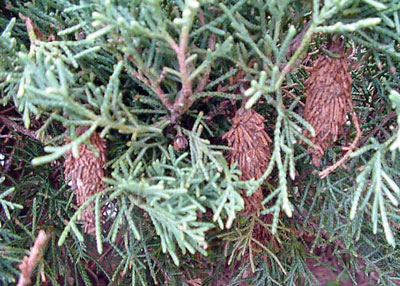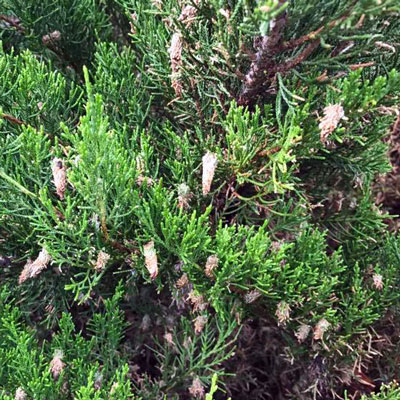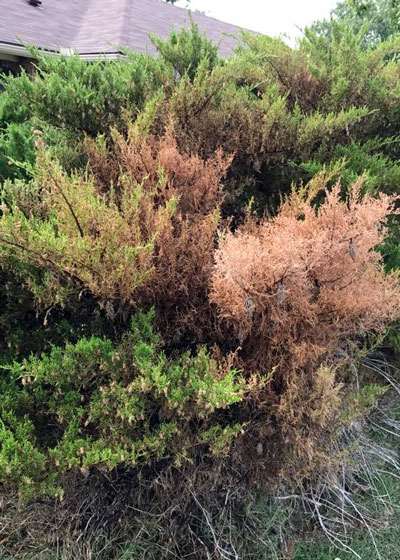Question of the Week Number 1: June 22, 2017
“Neil, what is killing my cedar trees and arborvitae?”
Much of Texas is being overrun with bagworms right now, and conifers are being devoured. They’re the larvae of a moth, and if you have a juniper, arborvitae, cypress or other cone-bearing plant that is looking sparse and browned, odds are that it’s loaded with these pests.

Photo: These mature bagworms were photographed later in season by Forrest Appleton. Picking these off by hand is only recourse at this point. Next year’s moths will emerge from these protective bags.
When they begin feeding, bagworms are quite small – perhaps no more than 1/4-inch long. However, they feed aggressively, and there may be hundreds of them. By the time they reach full larval size (including the bags they pull behind them) of 1-1/4 to 1-1/2 inch, they may have killed the plant.

Photo: Various stages of bagworm development are evident in this photograph from Facebook friend Alycyn Lindsey. A few of the largest bags may already be secured to their twigs, but the smaller ones are still being pulled around by the feeding larvae.
If you get at bagworms when they’re small and feeding actively they’re relatively easily controlled with almost any general-purpose organic or inorganic insecticide, but once they secure themselves to the small twigs three or four weeks later they will be through feeding and completely sequestered within the bags. They will remain there until next spring, when the moths will emerge and the life cycle will begin again. Hand-picking is the only way to remove them once they are attached.
Severely impacted plants may not survive. Conifers lack dormant buds that can sprout out as new needles when bagworms do serious damage to them.

Photo: Facebook friend Alycyn Lindsey shared this photo of a very severe bagworm outbreak on juniper. The worst of these branches has been been lost, but the plant overall could still be saved at the time this photograph was taken if an insecticide were administered immediately.
So it’s critical that you learn what bagworms’ damage looks like as they get started. It may be anytime from early May in South Texas through mid-June or later in North Texas, but they will show up most years. Address them quickly and your landscape plants will be grateful.
(Note: If you find bagworms on other types of plants such as roses, redbuds, sweetgums, etc, don’t be overly alarmed. They seldom do much damage. Those moths probably just couldn’t find anything better on which to lay eggs.)
